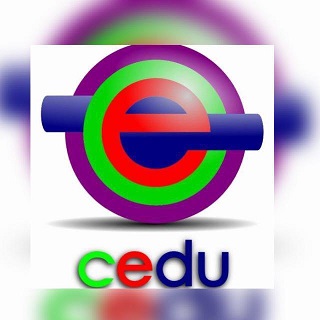HIGH ABILITIES OR GIFTEDNESS WITH CEREBRAL PALSY: INDICATION OF LITERARY ABSENCE
Keywords:
Double exceptionality, Cerebral palsy, Literary absence, MythsAbstract
By looking at the history of people with disabilities, we can see how these individuals have suffered with exclusion over time, and in the 21st century we realize that this reality is no different, they continue to fight for society to see them beyond disability and to recognize their talents. Therefore, this work aims to make a reflection on Double Exceptionality with Cerebral Palsy. For this, firstly, the concepts involved are presented with the objective of bringing knowledge and changing the look on students who have cerebral palsy, in addition to knowing how to identify high skills or giftedness in their profile. From this context, the work also has as prerogative to make a literary survey in Scielo bases (Scientifique Eletronic Library Online), Periódicos CAPES and BVS (Virtual Health Base) in the period of 15 years. With the results obtained, we found an absence of literature in relation to high abilities or giftedness concerning the individual with cerebral palsy. It is observed throughout this article that the driving force for this absence is the lack of knowledge on the subject, the prejudice that was culturally inserted into society and the myths that complicate the accurate diagnosis and identification of a person with dual exceptionality by disbelief in the possibility of an individual with cerebral palsy also having high abilities or giftedness.
Downloads
References
ALENCAR, M. L. S.; FLEITH, D. S. Superdotados: determinantes, educação e ajustamento. 2. ed. São Paulo: EPU, 2001.
BRASIL, Resolução CNE/CEB 4/2009. Diário Oficial da União, Brasília, 5 de outubro de2009. Disponível em: <http://portal.mec.gov.br/dmdocuments/rceb004_09.pdf>. Acessoem: 25/04/2021
COSTA, M. de P. R. da; RANGNI, R. de A. Altas habilidades/superdotação e deficiência: dupla necessidade educacional. Revista Ibero-Americana de Estudos em Educação, Araraquara, v. 5, n. 2, p. 208–217, 2011. DOI: 10.21723/riaee.v5i2.3484. Disponível em:https://periodicos.fclar.unesp.br/iberoamericana/article/view/3484. Acesso em: 23 abr. 2021.
CARVALHO, LuisOsete Ribeiro. DUARTE, Francisco Ricardo. MENEZES, Afonso Henrique Novaes. SOUZA Tito Eugenio Santos [et al].- Petrolina-PE,2019. 83p.: 20cm. 1 Livro digital.
DAWSON, G., & D’Souza, S. Behavioural Interventions to Remediate Learning Disorders: A technical report (2015), Centre for Brain Research and School of Psychology, The University of Auckland / Macquarie University Special Education Centre briefings - located at http://figshare.com/articles/MUSEC_Briefings_Archive/5096455 Acesso 19/04/2021 18:46
de Araújo Rangni, Rosemeire; Resende da Costa, Maria da Piedade Altas habilidades/superdotação e deficiência: reflexões sobre o duplo estigma Educar em Revista, núm. 53, julio-septiembre, 2014, pp. 187-199 Universidade Federal do Paraná. Paraná, Brasil
DELOU, Cristina Mª Carvalho. O papel da família no desenvolvimento das AltasHabilidades/Superdotação. In: FLEITH, D. (Org.). A Construção de Práticas Educacionais para Alunos com Altas Habilidades / Superdotação. Volume 3: O Aluno e a Família. Brasília, 2007.
GIANNI. M. A. C. Paralisia Cerebral: Aspectos clínicos. In: MOURA et al. (Org.). Fisioterapia: aspectos clínicos e práticos da reabilitação. 2 ed. São Paulo: Artes Médicas, 2010.
LANDAU, E. A coragem de ser superdotado. Tradução: Sandra Miessa. São
Paulo: Arte & Ciência, 2002.
NEVES, Libéria Rodrigues. Contribuições da arte ao atendimento educacional especializado e a inclusão escolar. Ver.bras.educ. espec. 2017, Vol 23, n.4pp. 489-504.ISSN 1980-5470.
PRIOR, S. (2013). Transição e alunos com dupla excepcionalidade. AustralasianJounalofSpecialEducation, 37(10, 19-27. Doi: 10.1017/Jse.2013.3
QUEIROZ, F.M.M, BRACCIALLI, L.M. P. Relação entre o perfil funcional, função motora grossa e habilidade manual dos alunos com paralisia cerebral. Revista Educação Especial/ V.29/ n. 54/p.95-108/ jan/abr. 2016.
RENZULLI, J. S. A concepção de superdotação no modelo dos três anéis: um modelo de desenvolvimento para a promoção da produtividade criativa.2014 In.
RENZULLI, J. S. What makes giftedness? Re-examining a definition. Phi Delta Kappan, 60,180-184, 261, 1978.
RECH, A. J. D.; FREITAS, S. N. Uma revisão bibliográfica sobre os mitos que envolvem as pessoas com altas habilidades. In: FREITAS, S. N. (Org.). Educação e altas habilidades/superdotação: a ousadia de rever conceitos e práticas. Santa Maria: Ed. da UFSM, 2006.
VIRGOLIM, A. M. R.; KONKIEWITZ, E. C, (Org.).Altashabilidades/superdotação,inteligência e criatividade: uma visão multidisciplinar. Campinas, SP: Papirus.2014, p. 219-264.
Published
How to Cite
Issue
Section
License
Copyright
The submission of originals to Cenas Educacionais (Educational Scenes - CEDU) implies the transfer, by the authors, of the publication rights. The copyright for the manuscripts published in this journal is the author(s), with CEDU rights over the first publication. Authors(s) may only use the same results in other publications by explicitly indicating CEDU as the means of the original publication.
Creative Commons License
Except where otherwise specified, the terms of a Creative Commons Attribution-ShareAlike 4.0 International License license apply to the material published in this journal, which allows unrestricted use, distribution and reproduction in any medium provided the original publication is correctly cited.






 This work is licensed with a License
This work is licensed with a License 